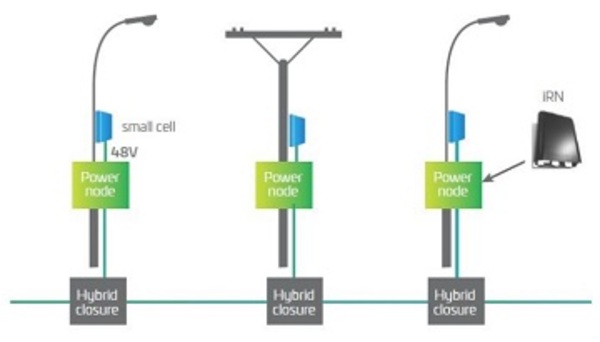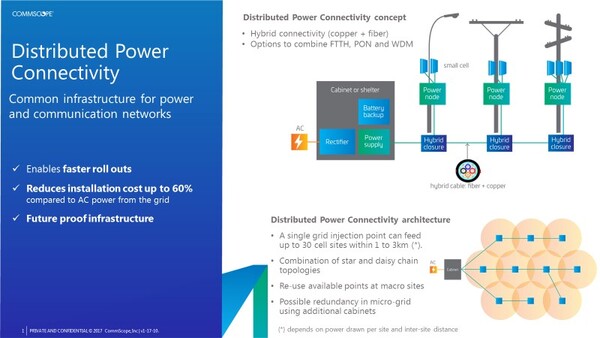
CLICK TO TWEET: Given the amount of electrical power is needed today and predictions for the future, CommScope's Tom Craft asks a few questions in this blog.
But do we have the power? Not just any power, but reliable power at the right quality and cost?
A 2016 report noted that in 2013 the average annual power consumed by the Information and Communication Technology (ICT) network reached 122 GW with 83 GW (68%) of that representing the share of infrastructure equipment. The 83 GW breaks down to:
- 13 GW for home and enterprise network
- 21.6 GW for access network including wireless and fixed wireless access
- 43 GW for service core and datacenters
- 4.7 GW for metro, edge and core network domains
Linking theses baseline numbers with growth predictions, the electrical power usage is staggering. Let’s consider a couple ICT network infrastructure growth areas just for 5G.
- Outdoor Metro/Small Cells: iGR estimates3 that mobile data demand in 2017 at 1.9 million terabytes/month and is forecasted to grow to 11.6 million terabytes/month in 2022. The report goes on to equate the data demand to powered infrastructure equipment of approximately 110,000 devices in 2017 with a CAGR of 50% through 2022.
- Edge Compute: With network latency concerns and the explosive growth of data in the ICT network, datacenters (Tier 1, 2 and 3), central office (i.e. CORD), and edge datacenters will grow to support the compute required within the ICT network. A recent research report estimates that by 2025 45% of central offices, 18% of macro cell sites and 15% of small cell sites will have some level of edge compute to support all the network data and associated SLAs. In the case of the central office and macro cell sites adding compute, the number of racks of compute and their associated power range from 1 – 6 racks/location and a consumed power of 6 – 12 kW/rack.
Given the amount of electrical power needed today and predictions for the future, the question becomes:
- Is the quality of the power sufficient for your network equipment? Not all power is equal. In the recent Edge Congress 2018, held in Austin, Texas, one of the highlighted concerns was that power quality is not the same everywhere and there is a real need for systems to provide better power quality.
- Is the network powering system increasing the network reliability and availability? For example, is it capable of centralizing a backup power system to aid operational efficiencies and reduce layers of distributed network gear?
- Are we employing methodologies, like peak shaving tuned to wireless traffic conditions, to decrease network power equipment while increasing overall power efficiency? CommScope estimates a reduction of capital expenses by approximately 30 percent and a network efficiency increase, thus reducing operational expenses, by approximately 5 percent.
- Are we allowing the vast amount of power to be available to support the utility grid during peak demands by redirecting power at those times?
CommScope’s newly updated eBook Understanding the RF Path can help if you are concerned with ICT network powering or have similar questions as the ones listed above. If you are looking for network powering options, read chapter 11 that specifically addresses CommScope’s Distributed Power Connectivity Solution. After you read, you’ll be able to confidently sing “I’ve got the power!”








